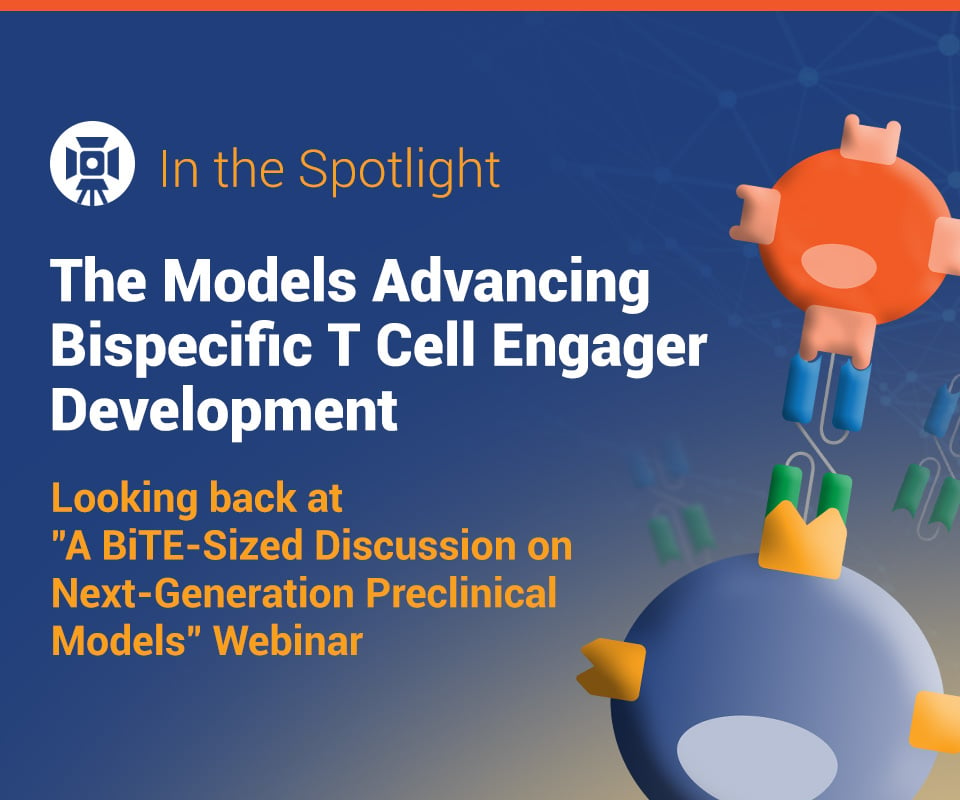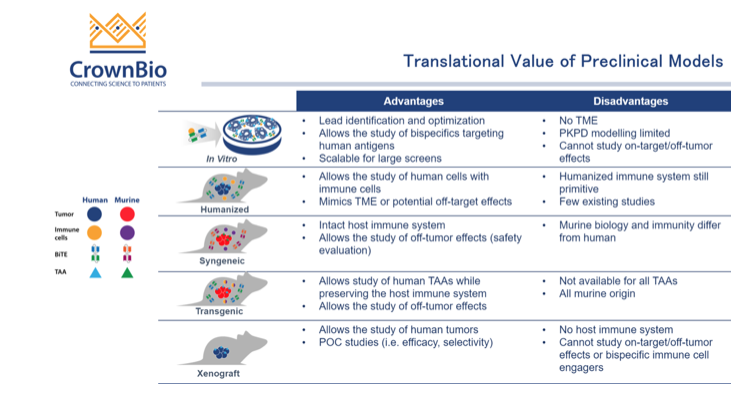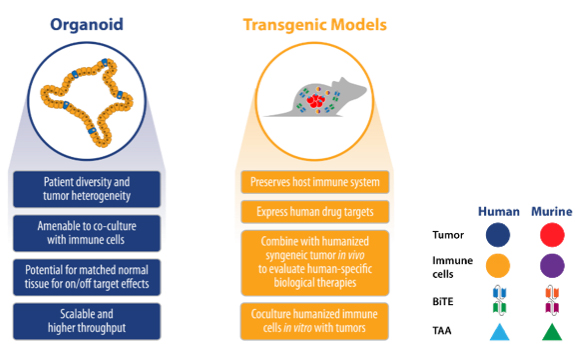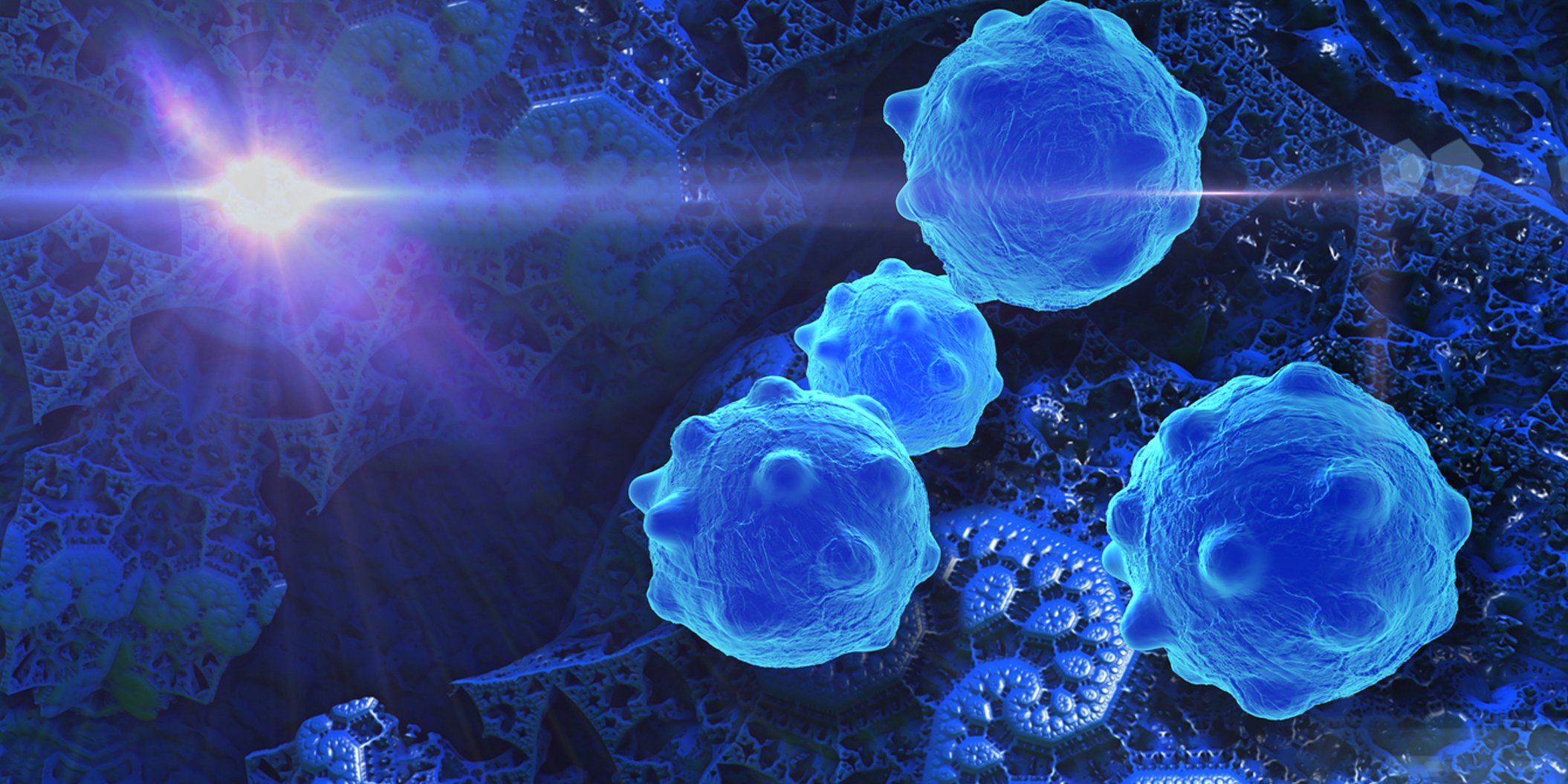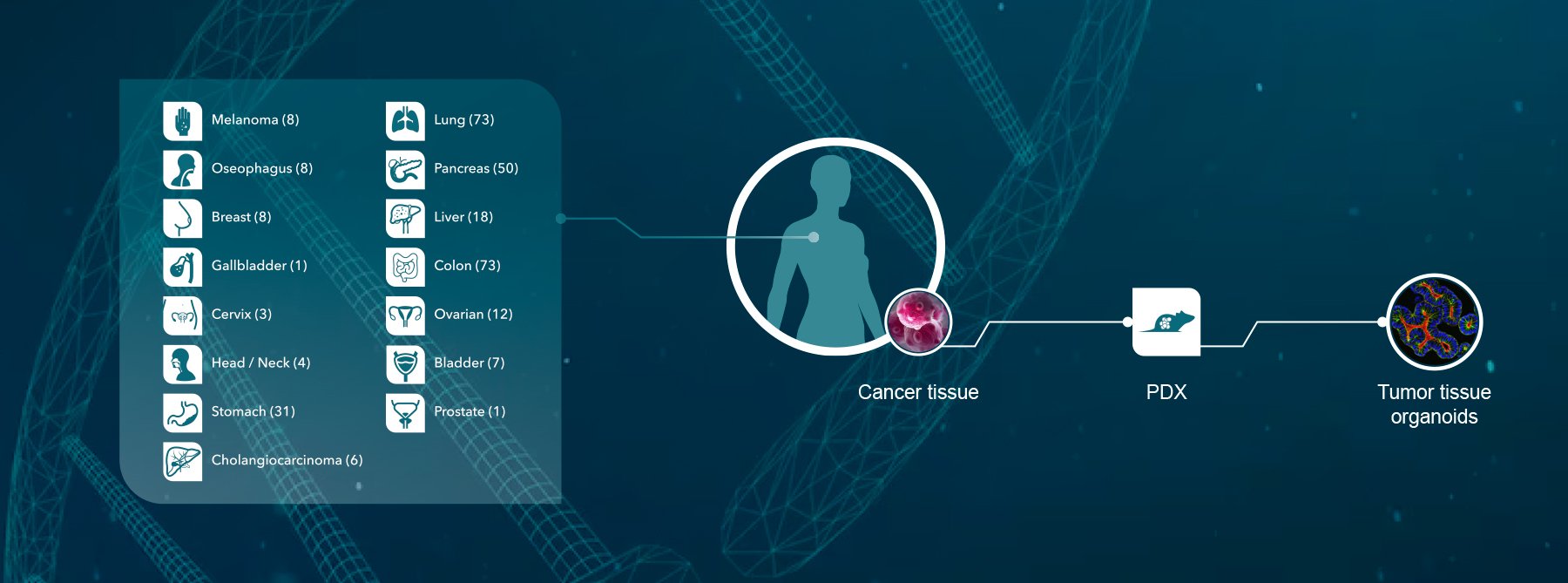 Last month we hosted a webinar with Dr. Ludovic Bourré, Senior Director of Scientific Engagement at Crown Bioscience, focused on the next generation of preclinical models advancing bispecific T cell engager (BiTE) development.
Last month we hosted a webinar with Dr. Ludovic Bourré, Senior Director of Scientific Engagement at Crown Bioscience, focused on the next generation of preclinical models advancing bispecific T cell engager (BiTE) development.
In this blog, we round up why new preclinical models are needed and how we can overcome some of today’s challenges to accelerate your BiTE development.
The Advantages of Bispecific Antibodies (including BiTEs!)
We’re all pretty familiar with monoclonal/monospecific antibodies (Abs) and how they are widely used as therapeutics to treat different diseases and disorders, such as cancer, and inflammatory and infectious diseases. As their name suggests, they contain two identical antigen-binding sites, but despite their success, they have limited efficacy, mainly due to low tumor penetration and retention and their inability to produce sufficient immune responses, including T cell activation.
Bispecific antibodies (bsAbs) are based on the conventional monoclonal antibody but have two unique antigen-binding sites, which advantageously enables binding of multiple targets. Current areas of focus in bsAbs development is oncology and inflammatory diseases, and of particular note, there are several potential advantages of using bsAbs in immuno-oncology.
BsAbs enhance tumor destruction through targeting two tumor-associated antigens (TAA) which;
- improves tumor selectivity and,
- reduces off-target toxic side effects.
Cytotoxic immune effector cells can be redirected with bsAbs resulting in increased tumor cell death. The use of bsAbs can also mitigate resistance mechanisms of tumor cells to therapies by modulating two functional pathways in the tumor.
Bispecific T cell engagers (BiTEs) are an emerging type of bsAb that target CD3 and tumor-specific antigens while also enhancing T cell cytotoxicity.
Preclinical Models for BiTEs
In order to assess the efficacy, recommended dose, and safety of novel therapeutics, such as BiTEs, there are several preclinical models to choose from. But there are a few challenges to be solved along the way, most of all, assessing the translational value of these models.
Preclinical models range from in vitro cell lines to mouse models such as humanized, syngeneic, transgenic or xenograft models, with varying translational value (Figure 1). Therefore, it is important to choose the preclinical model(s) that best supports your research.
The lack of adequate in vivo models has hampered the development of bsAbs due to the poor cross-reactivity with mouse CD3 (mCD3). To recreate T cell development and signaling, via targeting human CD3 in vivo, humanized CD3E (hCD3E) and fully humanized CD3EDG (hCD3EDG) models have been developed for evaluating CD3 bsAbs.
Next-Generation Models for BiTE Assessment
Of the next-generation models for BiTE assessment developed by Crown Bioscience, the unique patented technology of the HUB organoids, as well as the HuGEMM™ and HuCELL™ transgenic humanized CD3E and CD3EDG models, are the most clinically predictive 3D in vitro tumor models available.
Figure 2 highlights the variety of experiments and data that can be obtained from both types of models. Verification of TAA on tumor organoids is accomplished by OrganoidBase, which provides corresponding PDX and PDXO expression confirmed by flow cytometry. For in vivo preclinical models, the CD3 HuGEMM model can evaluate T cell redirecting antibodies targeting human CD3 and has the potential to characterize the response to CD3-based bsAbs.
Superior Research Using Human-Relevant Models
The ability to research novel T cell-redirecting therapies like BiTEs and other bsAbs, has been limited by the lack of translatable preclinical models that capture real-world patient diversity and tumor heterogeneity, as well as the absence of cross reactivity with mCD3E due to species differences. To overcome these challenges, Crown Bioscience offers several validated preclinical models:
- A fully human in vitro system, which includes the co-culture of tumor organoids and non-autologous PBMCs
- In vivo models to assess T cell redirecting antibodies targeting hCD3 – the CD3E and CD3EDG HuGEMM models
These preclinical models provide a novel platform for both in vivo and in vitro efficacy studies of bsAbs.
Continue your learning by watching our on-demand webinar. Topics covered include:
- Landscape of bsAb development
- BiTE mechanism of action
- BiTE-mediated T-cell retargeting
- Next-generation BiTE model assessment
- HUB Organoids™
- CD3EDG models


